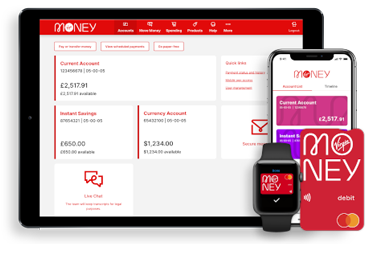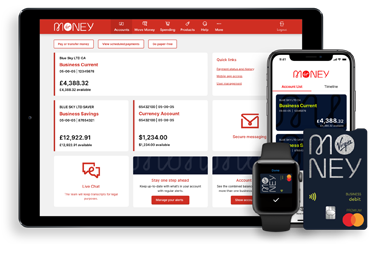How to choose a suitable business model
< back to all business news articles
20/12/2017
Deciding on a business model is one of the most important decisions you’ll need to make as a small business owner. It’s how your business will make money, and there are several different models to choose from (though you can have more than one at the same time). The trick is finding those that suits your business best, that will make money and help to grow your business.

All successful businesses have a model in place that works for them. Consider Netflix, which uses a subscription model, McDonalds, which spread the golden arches all over the world using a franchise model.
Which ones will work for you?
Choosing or changing the model for your business
Think about how businesses made money in the past. For example, software companies would sell their programs on CDROM’s through computer shops, where now it’s almost 100% from software as a service in the cloud. Lawyers still sell expertise by charging an hourly rate, but increasingly you can get online advice and pay for templated advice.
Review what your business does – retail, service, a combination – and then consider whether any of the below models would suit your business to add.
The franchise model
To replicate your business with the franchise model, it's important that there’s a demand for what you’re selling – is it so popular that it can be sold in different locations, by other business owners? Think of successful franchises – ones you know locally, and those that are globally dominant, like McDonalds – and ask yourself if your business has what it takes to follow in their footsteps.
Businesses that successfully become franchises are those that have robust and efficient systems in place. If your business runs like a well-oiled machine with great systems and streamlined processes, including well-trained staff, then there’s a good chance it can become a successful franchise.
The reseller
Resellers find products or represent brands and generally make profit based on the difference between the price they sell a product for and the price they must pay to acquire or sell the product. Affiliates fall into this category. They’re someone who helps sell a product or service in return for a commission or a perk. Affiliates never take ownership of the product – or even handle it – instead, they are rewarded for referring customers to a business when that customer buys something.
These affiliates often use social media and blogging to attract new leads through their personal networks in exchange for a percentage of each sale.
Getting people to re-sell your product or service gives you the ability to reach more customers than you could on your own.
The broker
The broker essentially brings buyer and seller together and takes a transaction fee. This category has exploded with the growth of online platforms that make bringing buyers and sellers together from anywhere in the world much easier. For example, PayPal brokers services between a buyer and a seller, using the actual exchange of money.
The subscriber
The internet has facilitated an explosion of subscription-based businesses. From grocers to clothiers, you can go online and find many examples of companies embracing the subscription business model. A subscription model has the potential to work for nearly any type of business, provided your customers are willing to commit to recurring payments in exchange for defined products or services.
The key to winning over subscribers is to offer a solution with a high perceived value at a low flat rate – like your monthly gym membership or favourite mobile phone app.
The license/royalty model
With this model, you can develop an innovation which you then protect through a patent, copyright, trademark, or trade secret, creating intellectual property. You would then license the innovation or technology to a second party whose responsibility it is to commercialise the innovation. As compensation for allowing another party to use its intellectual property, the licensor will receive a royalty.

The manufacturing model
This model involves manufacturing products to be sold to distributors, retailers, etc. As a manufacturer, you have the capabilities to mass produce products and you’ll build up relationships with distributors, wholesalers and retailers. In some cases, manufacturers go direct to consumers, and this is known as the Manufacturer-Direct model.
The advertising model
Online media sites and publishers often use this model because it's difficult to get users to pay for content that they can find for free in most cases. The idea is to present news, information or feature articles that attract an audience and then sell advertising space to businesses that have a message for that audience. Online service providers with in-demand services such as music or picture editing often have more flexibility in that they can make money from paying customers or attract advertisers.
The contracting model
This is pretty much what it sounds like. Your business is one that pitches for contracts and is commonly used for industries such as construction. These mostly operate for B2B businesses, and with the rise in the number of businesses outsourcing many different projects, the contracting model is becoming increasingly popular.
The alliance model
Businesses form alliances for many reasons: to enter new markets, offer a more complete solution, share and reduce risks, access new technologies. It's also a way to maximise a business's assets, capabilities and activities, since you'll gain access to resources or processes from outside players such as suppliers, customers, competitors, and divisions of government. Often joint ventures of this kind involve one business hunting down business and then sub-contracting it to their partner.
How do I decide?
Keep the following in mind:
- How big is the market - If you’re going for a very narrow niche, you’ll probably choose a different model to the one you would if there’s greater market potential.
- What are your competitors doing - If they’re using a successful model there’s no reason you can’t adopt it as well.
- Who is your customer - The characteristics of your target customer is a factor in deciding how you’ll sell to them.
- What distribution channels will you use - Direct sales, online store, sales representatives? Profit and expenses can vary depending on the model that fits.
Summary
A strong business model should also consider additional ways to make money and to grow, so flexibility is important. For example, many businesses learn that a combination of models is right for them to achieve peak growth. The process for choosing your business model is really an exercise in understanding the classic models and deciding the best fit for your idea through a process of elimination.
Additional resources
POSTED IN: 2017,Pricing,Day to Day Banking,Startup
SHARE
Related Articles
You can find impartial information and guidance on money matters on the “MoneyHelper” website.
Clydesdale Bank is covered by the Financial Services Compensation Scheme (FSCS), Find out more.


